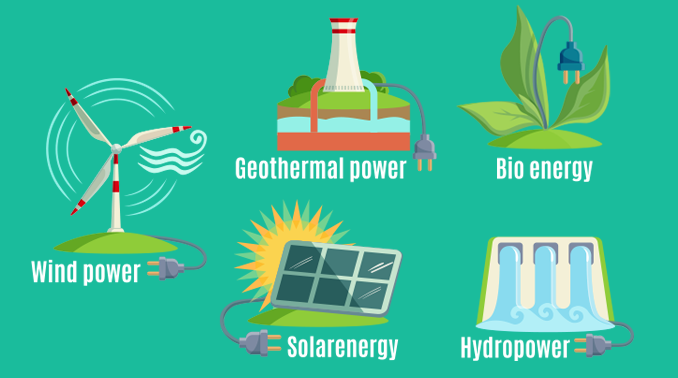
Exploring the Landscape: Sustainable Power Options
In a world where environmental consciousness is paramount, exploring sustainable power options becomes imperative. This article takes a comprehensive look at various alternatives, technologies, and initiatives shaping a greener and more sustainable energy landscape, providing insights into the choices individuals and businesses have in their quest for clean and renewable power.
Renewable Energy Giants: Solar and Wind
At the forefront of sustainable power options stand the giants of renewable energy—solar and wind. Harnessing the power of the sun through solar panels and capturing the kinetic energy of the wind with turbines, these technologies offer abundant and eco-friendly solutions. Advances in efficiency and cost-effectiveness make solar and wind power increasingly accessible, contributing significantly to a sustainable energy mix.
Hydropower: Tapping into Nature’s Flow
Hydropower, a traditional yet powerful sustainable option, taps into the natural flow of rivers and water bodies. By converting the energy from moving water into electricity, hydropower remains a reliable and low-emission source of power. Ongoing innovations in turbine technology and environmental impact mitigation continue to enhance the sustainability of hydropower options.
Geothermal Energy: Earth’s Inner Heat Unleashed
Digging deeper into sustainable power options, geothermal energy utilizes the Earth’s internal heat for electricity generation and heating applications. Geothermal power plants and heat pumps harness the Earth’s thermal energy, providing a continuous and environmentally friendly power source. As technology advances, geothermal options become more widespread and economically viable.
Biomass and Bioenergy: Tapping into Organic Resources
Biomass and bioenergy options leverage organic materials to generate power. From wood and agricultural residues to biofuels, these sustainable choices contribute to a circular economy by utilizing organic waste for energy production. As technology evolves, biomass and bioenergy continue to play a crucial role in reducing reliance on fossil fuels.
Energy Storage Innovations: Balancing the Equation
The integration of energy storage solutions is essential for a sustainable power grid. Battery technologies, compressed air energy storage, and other innovative methods enable the storage of excess energy generated from renewable sources. This stored energy can then be released during periods of high demand or low renewable generation, ensuring a reliable and balanced power supply.
Smart Grids: Enabling Efficiency and Adaptability
Smart grids represent a transformative approach to energy distribution and consumption. By incorporating advanced communication and control systems, smart grids optimize the efficiency of the power grid. They enable real-time monitoring, demand response, and the seamless integration of diverse sustainable power sources, laying the foundation for a resilient and adaptive energy infrastructure.
Microgrids: Powering Local Resilience
Microgrids offer a localized and resilient approach to energy distribution. These self-sufficient systems can operate independently or in conjunction with the main power grid. Sustainable power options, such as solar panels and energy storage, are often integrated into microgrids, providing communities, businesses, and remote areas with reliable and sustainable power sources.
Electric Vehicles: Transforming Transportation
In the pursuit of sustainable power options, the transportation sector plays a pivotal role. The rise of electric vehicles (EVs) represents a transformative shift toward cleaner and more sustainable transportation. EVs, powered by electricity from renewable sources, contribute to reducing carbon emissions and dependence on fossil fuels, aligning with the broader goal of achieving sustainable mobility.
Empowering Decisions through Education
A critical aspect of embracing sustainable power options is education and awareness. Informing individuals, businesses, and communities about the environmental benefits, cost savings, and technological advancements in sustainable energy fosters informed decision-making. Educational initiatives empower stakeholders to actively participate in the transition toward a more sustainable and resilient energy future.
Conclusion: A Sustainable Energy Renaissance
In conclusion, the landscape of sustainable power options is dynamic and evolving. From harnessing sunlight and wind to tapping into Earth’s inner heat and utilizing organic resources, the choices are diverse. Integrating smart grids, energy storage innovations, and transformative technologies like electric vehicles marks the path toward a sustainable energy renaissance. To explore more about sustainable power options and make informed choices, visit Sustainable Power Options.

